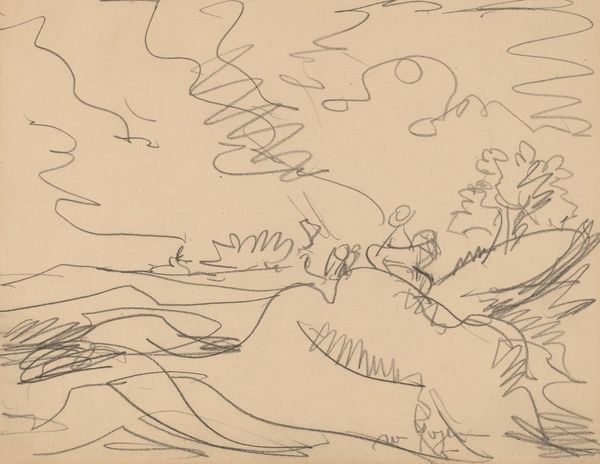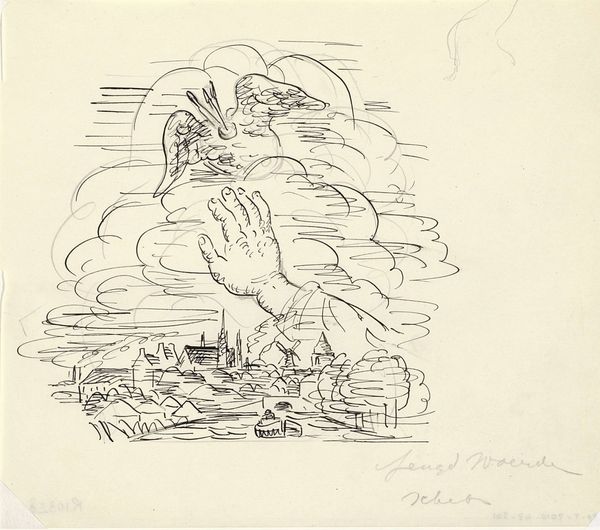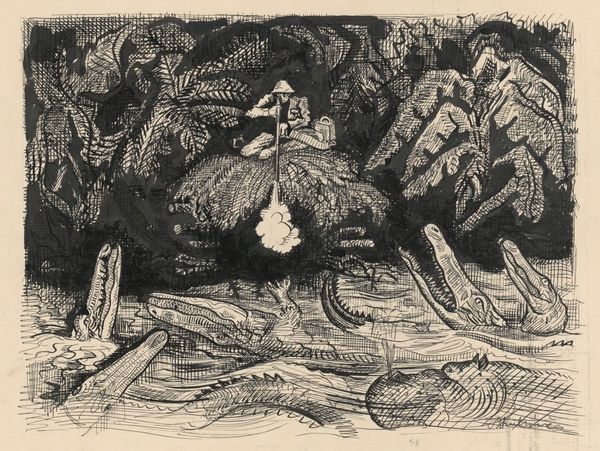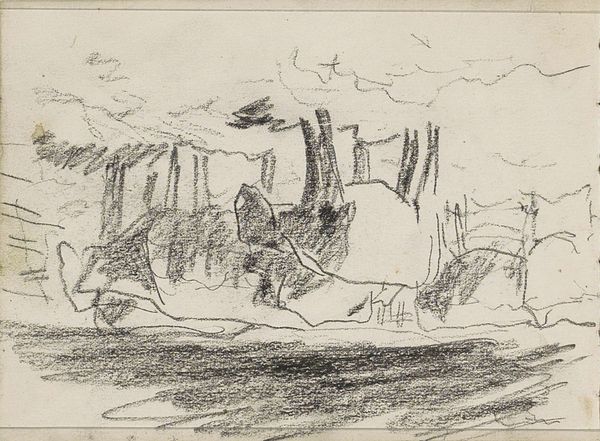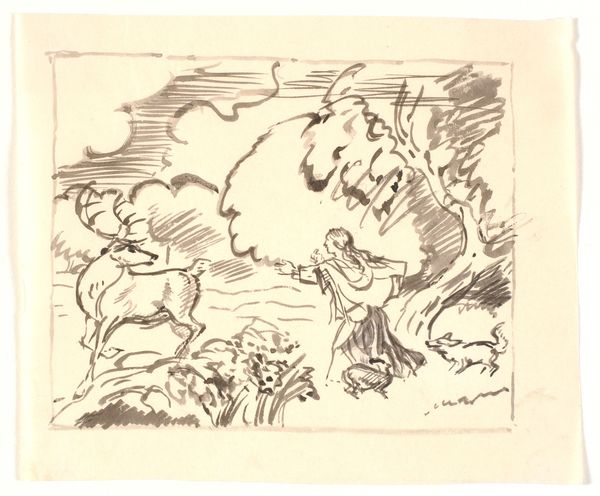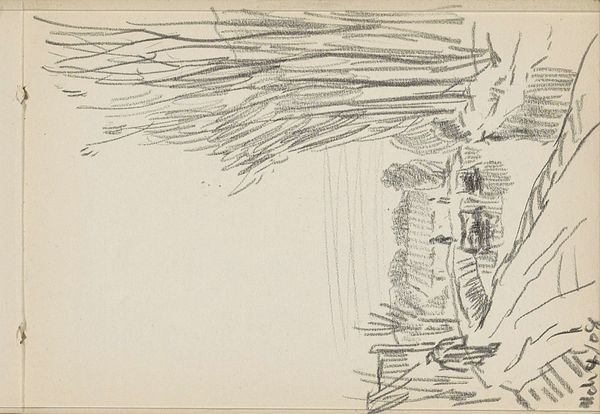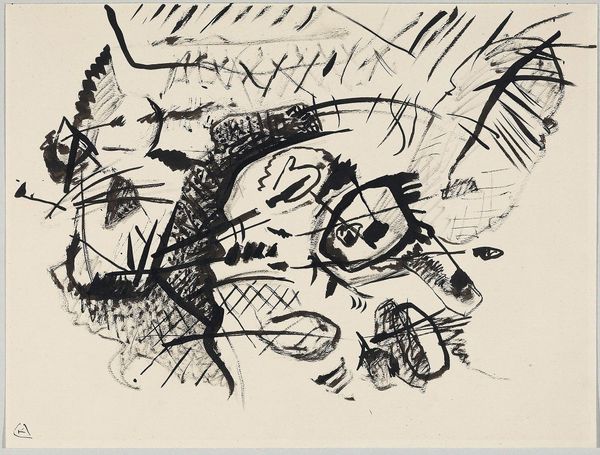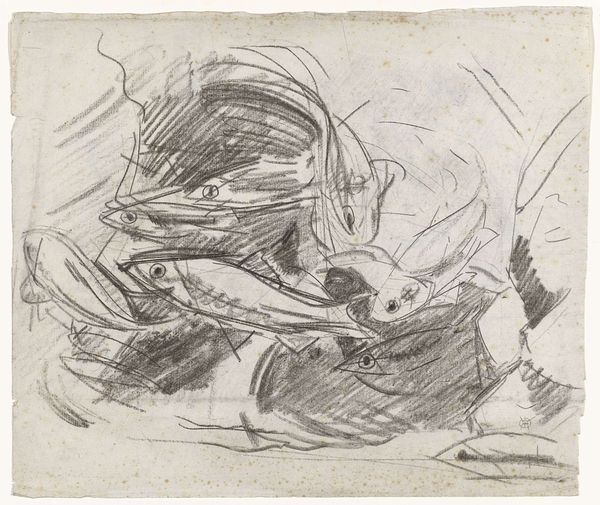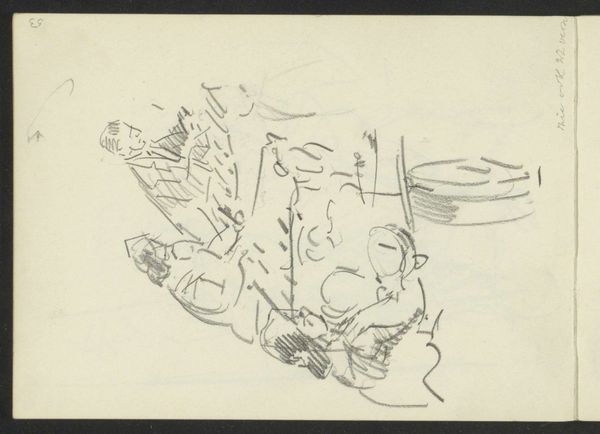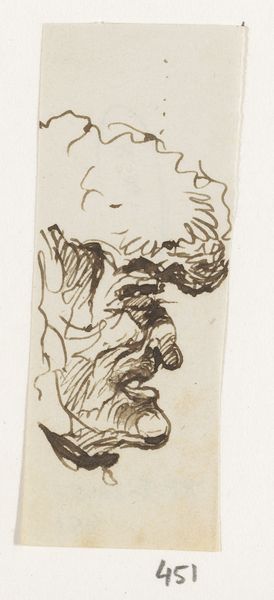
Zonder titel Schets vignet voor biografie van Gestel door Van der Pluym, gezicht op Woerden met daarboven een hand die reikt naar een gevleugeld palet 1935 - 1936
0:00
0:00
Dimensions: height 132 mm, width 180 mm
Copyright: Rijks Museum: Open Domain
Curator: This is an intriguing pen and ink drawing by Leo Gestel, dating from 1935-1936. The piece is titled, "Zonder titel Schets vignet voor biografie van Gestel door Van der Pluym, gezicht op Woerden met daarboven een hand die reikt naar een gevleugeld palet," which translates to "Untitled Sketch vignette for biography of Gestel by Van der Pluym, view of Woerden with above it a hand reaching for a winged palette." Editor: The first thing that strikes me is the sketchiness. It's almost frenetic, full of movement and a lightness of touch that belies the symbolic weight of the imagery. You've got this hand reaching for a winged palette above a very traditional cityscape. Curator: Exactly! The hand reaching towards the winged palette symbolizes, in my interpretation, the artist grasping for inspiration, almost reaching into the heavens for artistic creation. This ties into Gestel's biography, where he continuously wrestled with his artistic identity amidst changing socio-political landscapes, particularly during the rise of modernism. Editor: The labor of the artist becomes the subject. That upward reach tells a story of striving. I also can’t help but notice the direct contrast between the rather grounded, meticulously detailed cityscape below and the fluid, almost ethereal quality of the hand and the winged palette above. Woerden is so well captured, you can even make out the windmill. But is this winged palette… an angel? A tool? Curator: Both could be true. I see this as a manifestation of modernism. The grounded depiction of the town Woerden represents his connection to reality, whereas the symbolic forms are influenced by Expressionism and perhaps even some elements of symbolism. Gestel uses these sharp stylistic variations to demonstrate both his roots and ambition. It's about an artistic search for something that transcends the mundane, almost pushing against the known reality represented by the town. Editor: Right, and let's remember this was intended as a vignette for his biography. That context highlights the hand as Gestel's own—his ambition and the artistic struggle becomes quite palpable. What do you think Gestel wanted a viewer to come away with about his sense of identity? Curator: Perhaps, ultimately, that artistic identity is a synthesis: The known and knowable fused with ethereal, boundless creative power. The solid world can give way to one where human imagination can literally take flight. Editor: It's as though he's depicting the very process of turning observations of everyday life into art itself – capturing the transformation of the physical world into the realm of creative possibility.
Comments
No comments
Be the first to comment and join the conversation on the ultimate creative platform.

